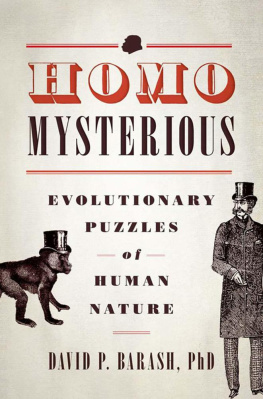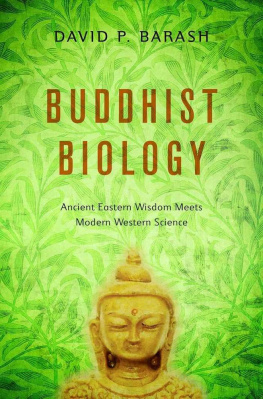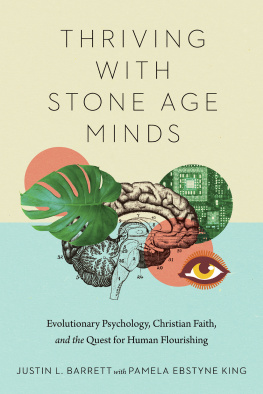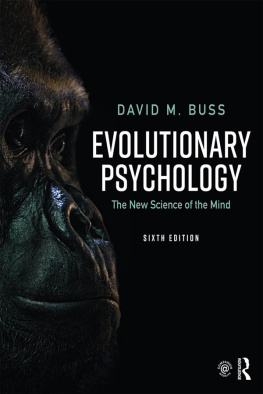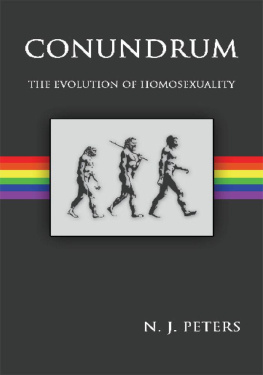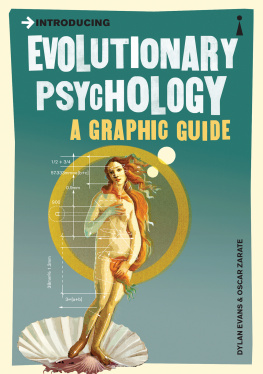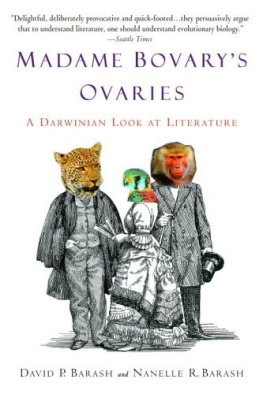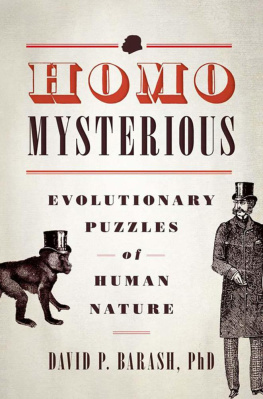HOMO MYSTERIOUS
DAVID P. BARASH
HOMO MYSTERIOUS
Evolutionary Puzzles of
Human Nature


Oxford University Press, Inc., publishes works that further
Oxford Universitys objective of excellence
in research, scholarship, and education.
Oxford New York
Auckland Cape Town Dar es Salaam Hong Kong Karachi Kuala Lumpur
Madrid Melbourne Mexico City Nairobi New Delhi Shanghai Taipei Toronto
With offices in
Argentina Austria Brazil Chile Czech Republic France Greece Guatemala Hungary
Italy Japan Poland Portugal Singapore South Korea Switzerland Thailand Turkey
Ukraine Vietnam
Copyright 2012 by Oxford University Press, Inc.
Published by Oxford University Press, Inc.
198 Madison Avenue, New York, New York 10016
www.oup.com
Oxford is a registered trademark of Oxford University Press, Inc.
All rights reserved. No part of this publication may be reproduced, stored in a retrieval system, or transmitted, in any form or by any means, electronic, mechanical, photocopying, recording, or otherwise, without the prior permission of Oxford University Press
Library of Congress Cataloging-in-Publication Data
Barash, David P.
Homo mysterious : evolutionary puzzles of human nature /
David P. Barash.
p. cm.
Includes bibliographical references and index.
ISBN 978-0-19-975194-5 (hardback: alk. paper)
1. Human evolution. 2. Social evolution.
3. Evolution (Biology) 4. Sex (Biology)
5. Sociobiology. I. Title.
GN281.B36 2012
303.4dc23 2011044302
Printed in the United States of America on acid-free paper
TO ISAAC SANDER BOGAISKY, WHO WILL
DOUBTLESS ENCOUNTER MANY DELIGHTFUL
MYSTERIES AS HE GROWS UP, AND WHO
MIGHT EVEN SOLVE A FEW
Contents
Acknowledgments
I thank Abby Gross and Joanna Ng, at Oxford, who contributed mightily (probably more than they know) to this project; my wife, Judith, who tolerated (and contributed to) more diversionary discussions than were reasonable; and the many scientists whose work stimulated this book by asking good questions and seeking ever-better answers. I also thank the students in my University of Washington Honors Arts & Sciences 350 class, who helped me chew over and improve the text.
HOMO MYSTERIOUS
C HAPTER O NE

In Praise of Mystery: Thats
How the Light Gets In Mystics exult in mystery and want it to stay mysterious. Scientists exult in mystery for a
different reason: It gives them something to do.
Richard Dawkins
W E ARE SURROUNDED BY MYSTERIES . Indeed, mysteries R us. There are more things in human biology than are dreamt of in our philosophy ormore to the pointknown by our science. But dont get the wrong idea, Horatio: Mystery is not the same as mysticism, and Homo Mysterious does not refer to some sort of ineffable, spiritualistic claptrap beyond the reach of natural law or human understanding. Just as a weed is a plant that hasnt yet been assigned a value, the mysteries we shall encounter in Homo Mysterioussuch biological oddities as female orgasm, prominent nonlactating breasts, advanced consciousness, the origins of religious faith, and the making of artare simply scientific questions waiting for answers.
It was a stroke of brilliance as well as immodesty when our species named itself Homo sapiens, usually translated as man the wise. A better rendering, however, would probably have been the knowing, since human beings seem more effective at accumulating knowledge than wisdom, although it can be hoped that the former will lead, eventually, to the latter.
In any event, there is no doubt that our collective store of knowledge has been increasing dramatically and that science is largely responsible. At the same time, there is also no doubt that plenty remains to be learned. Although some people gesture toward what has been called the end of sciencethe notion that all the Big Questions have been answered (mission accomplished redux), leaving us with mere mopping-up operationsthe reality is that there is an awful lot that we still do not know. And ironically, we Homo sapiens are both subject and object of much of that unknowing.
Know thyself? Easier said than done. Moreover, at the risk of descending into clich, the more we know, the more we discover how much remains to be learned. Far from discouraging, I hope this will be seen as both a reward for past accomplishments and, no less, a challenge to do more. Who wants to read about a topic when science has already closed the book on it? Most books about science are just that: accounts of what has already been learned. This one is different; its about mysteries, what we dont knowyet.
The Collins International Dictionary (2003) defines mystery as an unexplained or inexplicable event, phenomenon, etc., which seems reasonable enough until you think about it. For an event or phenomenon to be unexplained is one thing, but to be inexplicable is quite another. If something is truly inexplicable, it is beyond the possible reach of human understanding and therefore likely to fit a theological rather than a scientific definition of mystery: something unknowable except through divine revelation, such as how wine is mysteriously turned into the literal blood of Christ during the Eucharist.
Let me lay my cards on the table here and now. I do not believe in theological mysteries, or rather, I believe that they are simply ways of clothing meaninglessness in gobbledygook. Homo Mysterious, therefore, will not be concerned with the inexplicable, but rather with the unexplained, with things about human beings that are currently unknown but that fall within the potential reach of science. After all, the real world poses genuine mysteries aplenty, that is, puzzles that are not yet susceptible to understanding, but that we can be confident will be brought to heel, sometime in the future.
Science, of course, is in the business of doing just this, answering questions about the natural world, Homo sapiens included. And since nature does not disclose its secrets readily, scientists are understandably proud whenever they solve any of its numerous puzzles. As a result, we teach courses, give lectures, and occasionally write books whose goal is to share these triumphs. They are, after all, hard-won and often immensely useful. No one, therefore, should begrudge us taking a victory lap now and then.
But just as the race is not to the swift, nor the battle to the strong (Ecclesiastes 9:11), the cheers of the crowd do not always bespeak that the race is over, or the battle won.
I have been teaching science courses at the college and university level for 40 years and am no less guilty than my colleagues of providing what may well be a misleading perspective on science. Like everyone else, I teach what is known, often at the risk of misleading students into thinking that todays science is a catalog of established and comprehended facts: This is how cells metabolize carbohydrates; this is how natural selection works; this is how the information encoded in DNA is translated into proteins. The reality, of course, is that we do know quite a bit about how cells metabolize carbohydrates, how natural selection works, and so forth. But another parallel reality is that there is much more that we do

